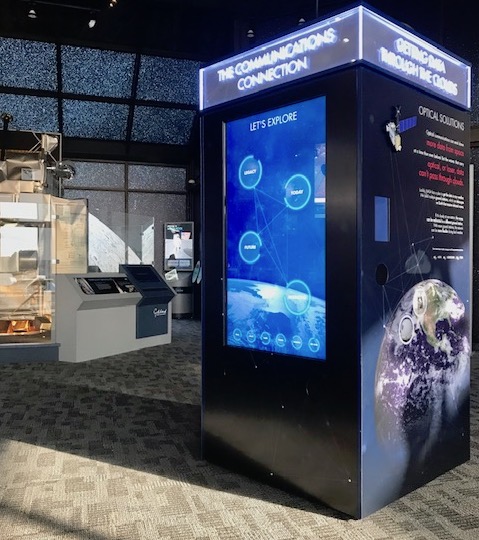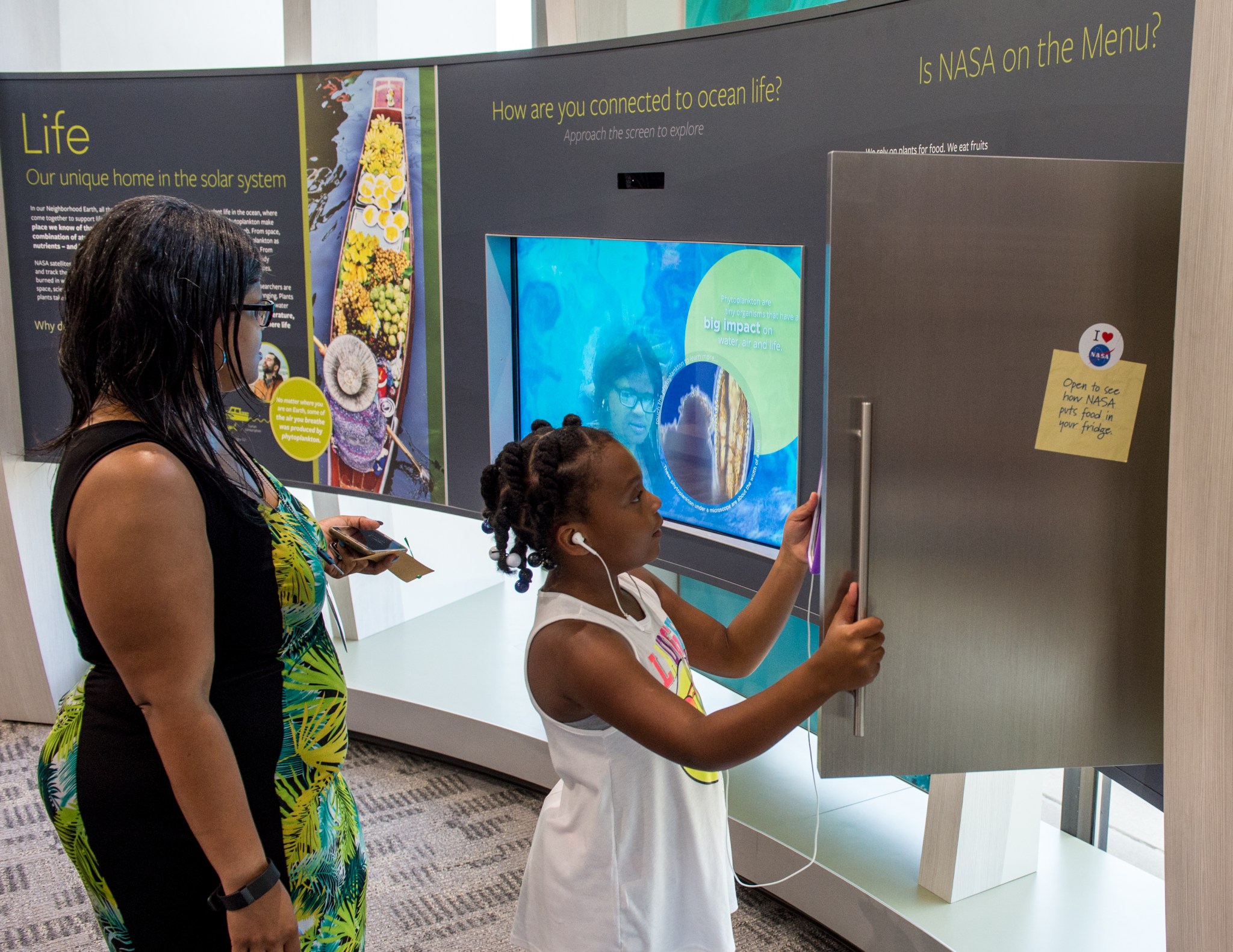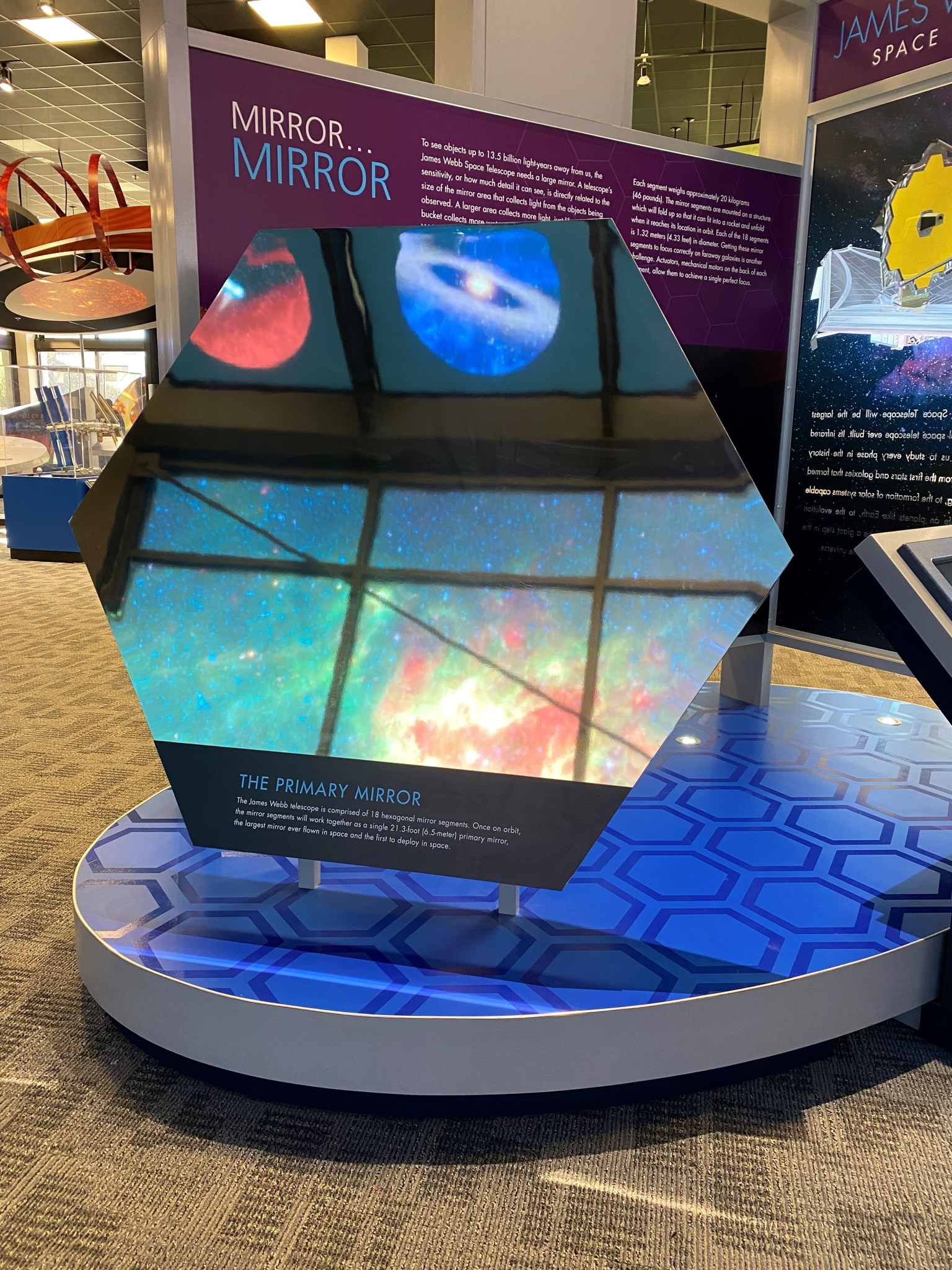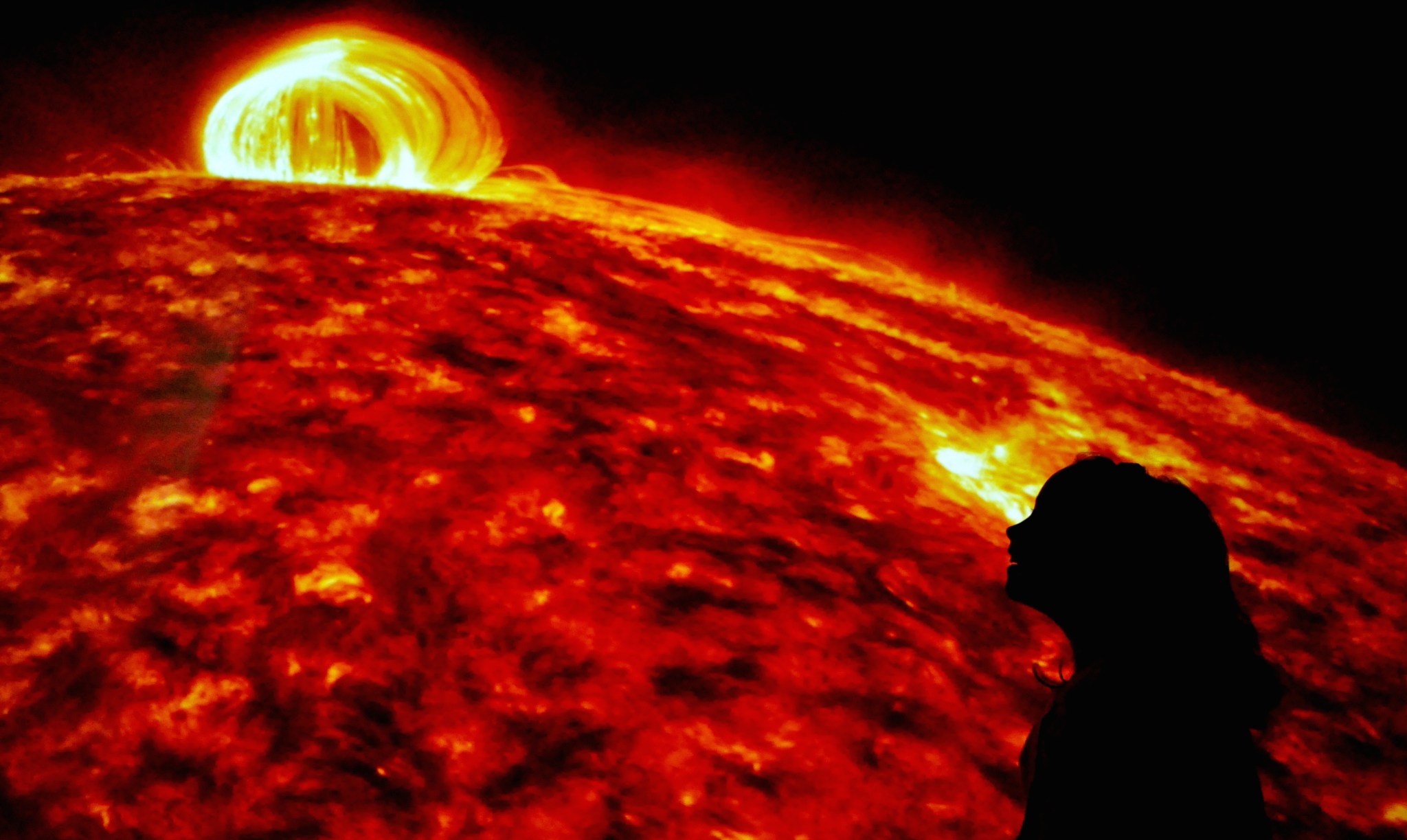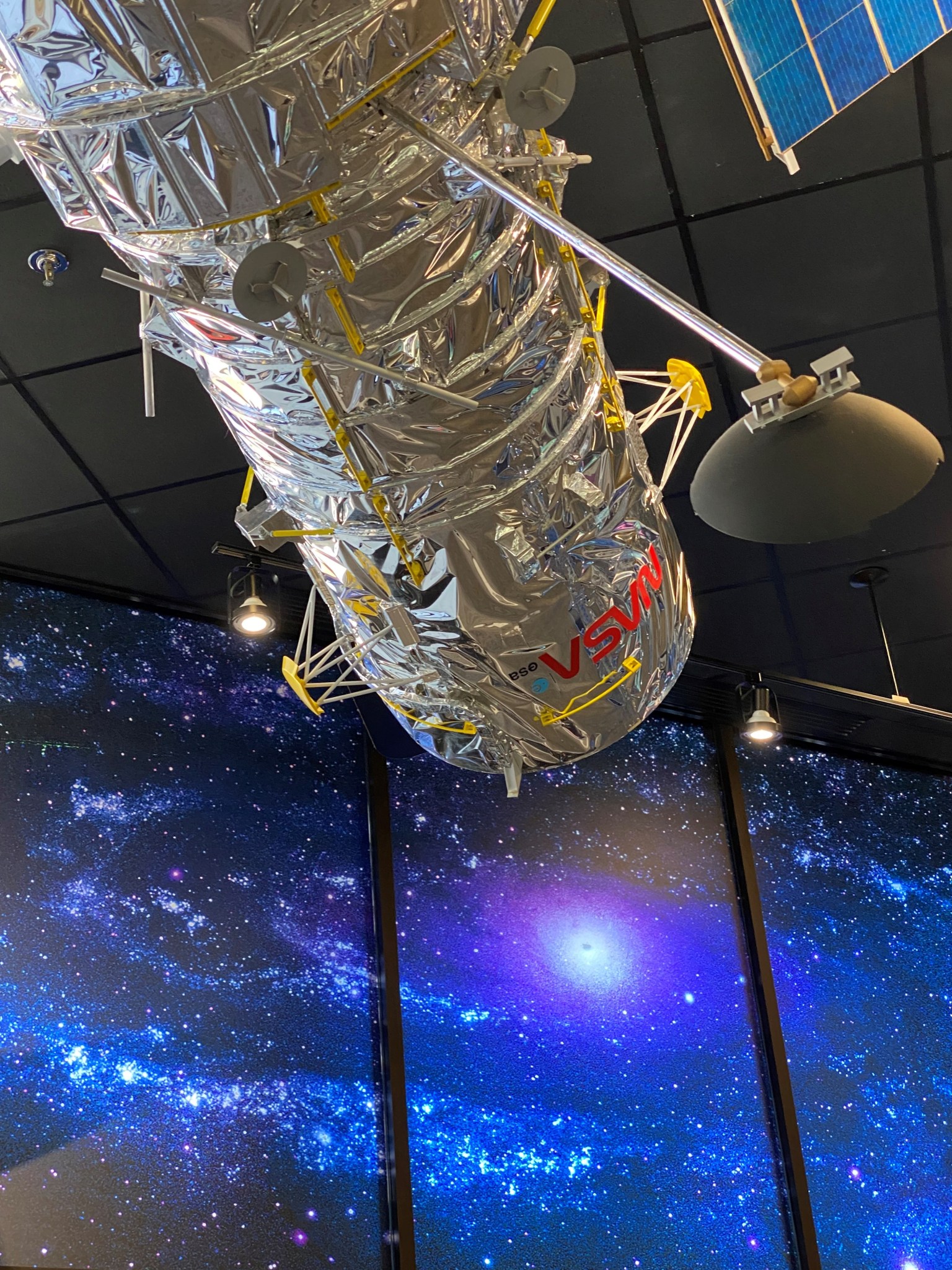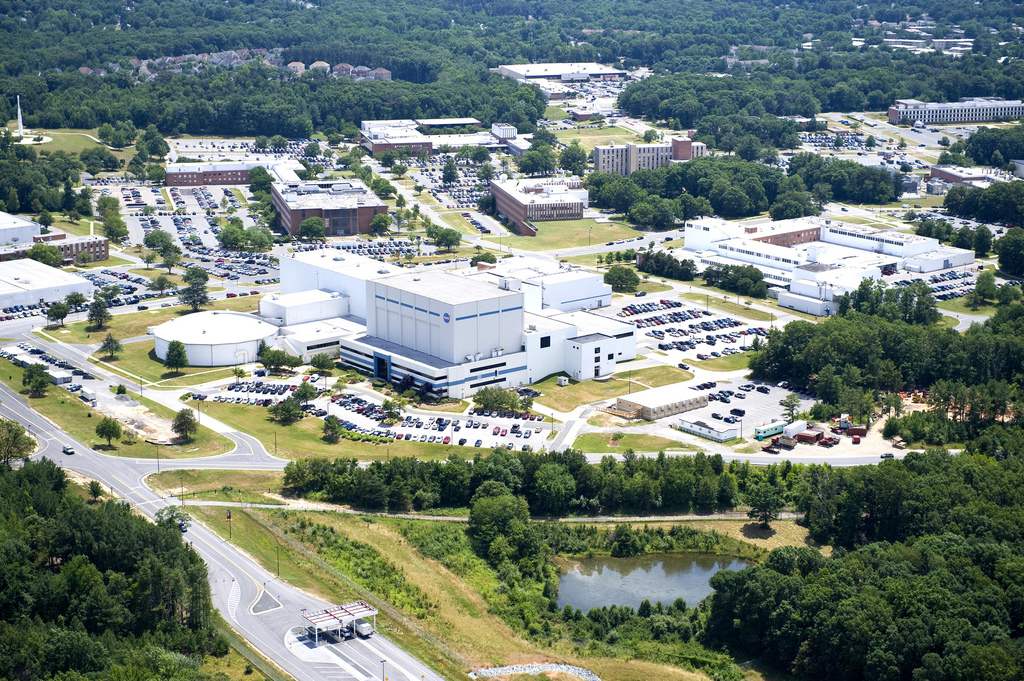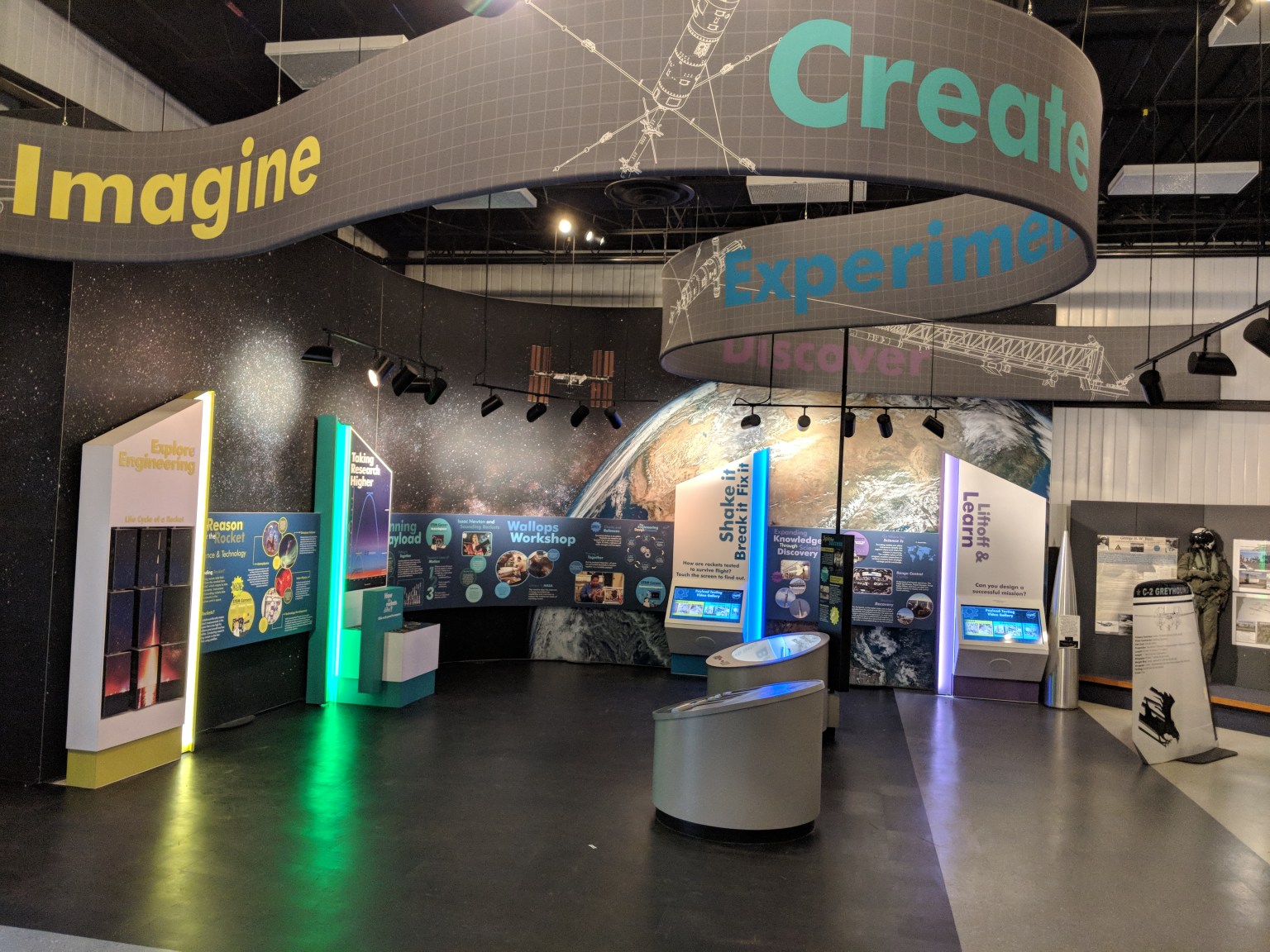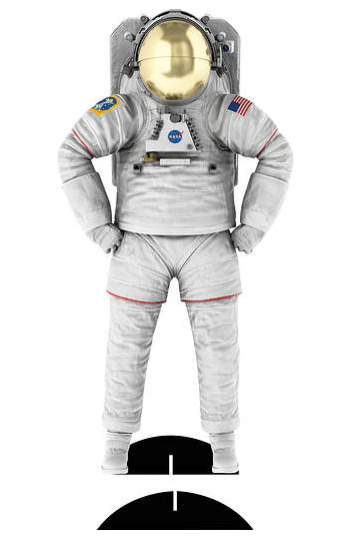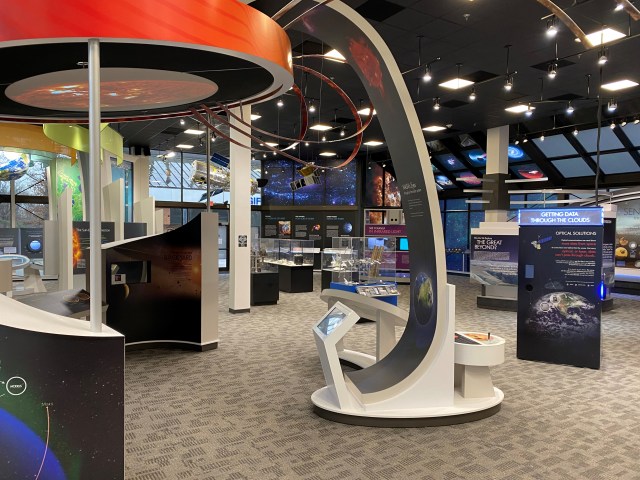
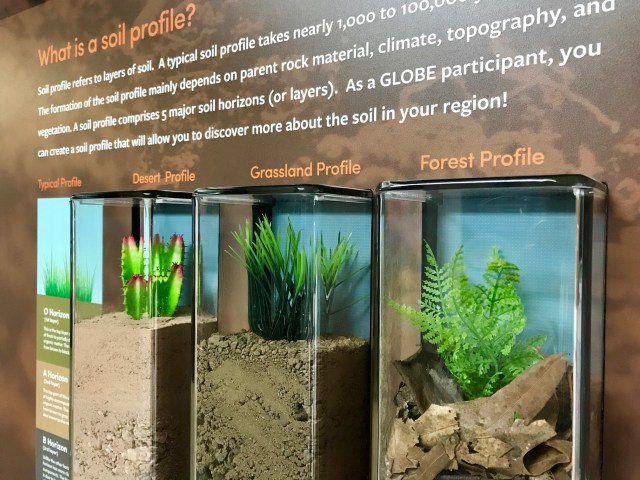
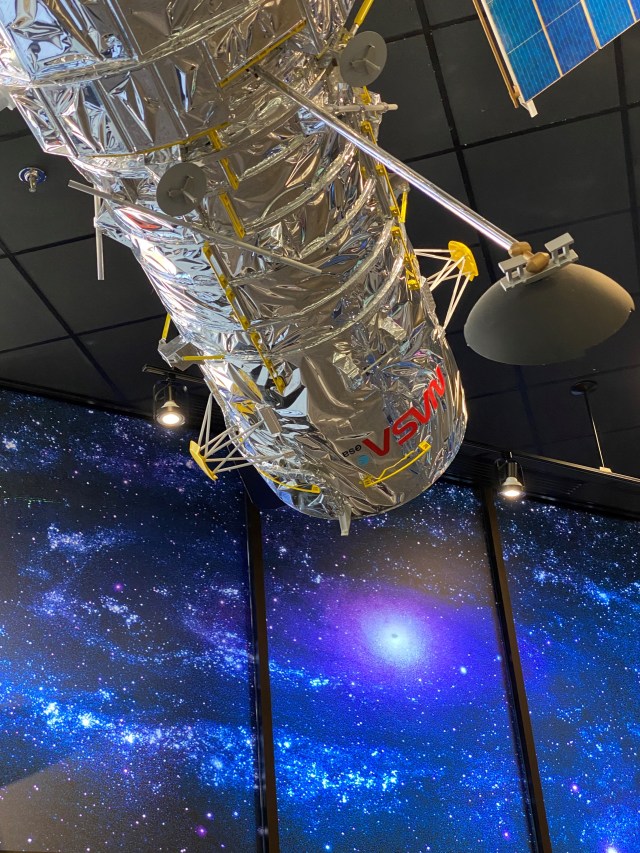
Goddard Permanent Exhibits
Learn more about the permanent displays and exhibits at the NASA Goddard Visitor Center!
Heliophysics: “Exploring the Spaces Between”
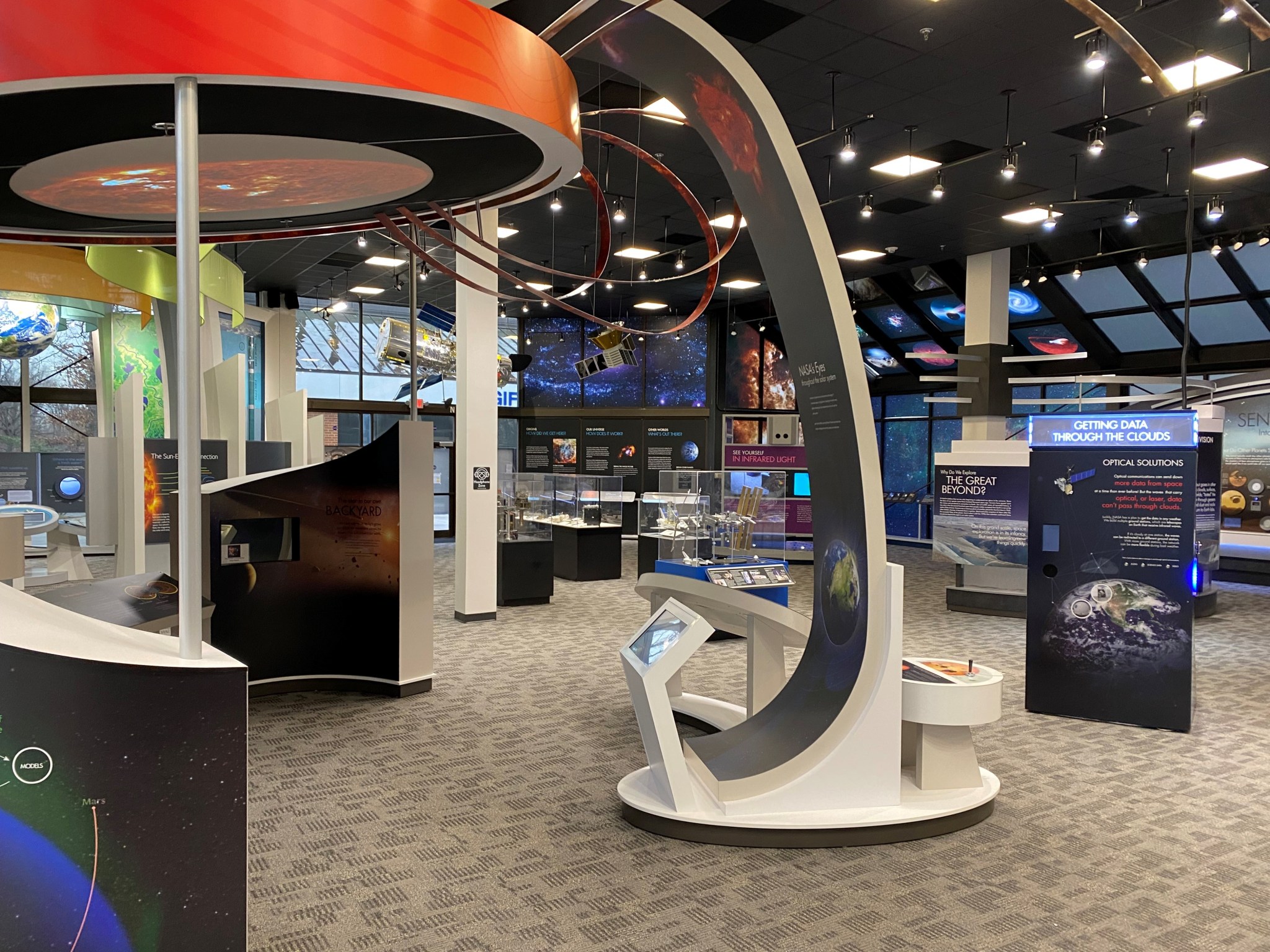
The new heliophysics exhibit, called “Exploring the Spaces Between” reveals the many hidden and surprising ways our Sun affects everything in our solar system, including Earth. Visitors are invited to follow the journey of a solar particle, “hear” the solar wind, feel the protective resistance of Earth’s magnetic shield, watch the magnificent glow of the northern lights, and much more. Through multisensory, immersive experiences, the exhibit invites visitors to a new appreciation of the many ways we are connected to our closest star.
Solar System Exploration: “Beyond”
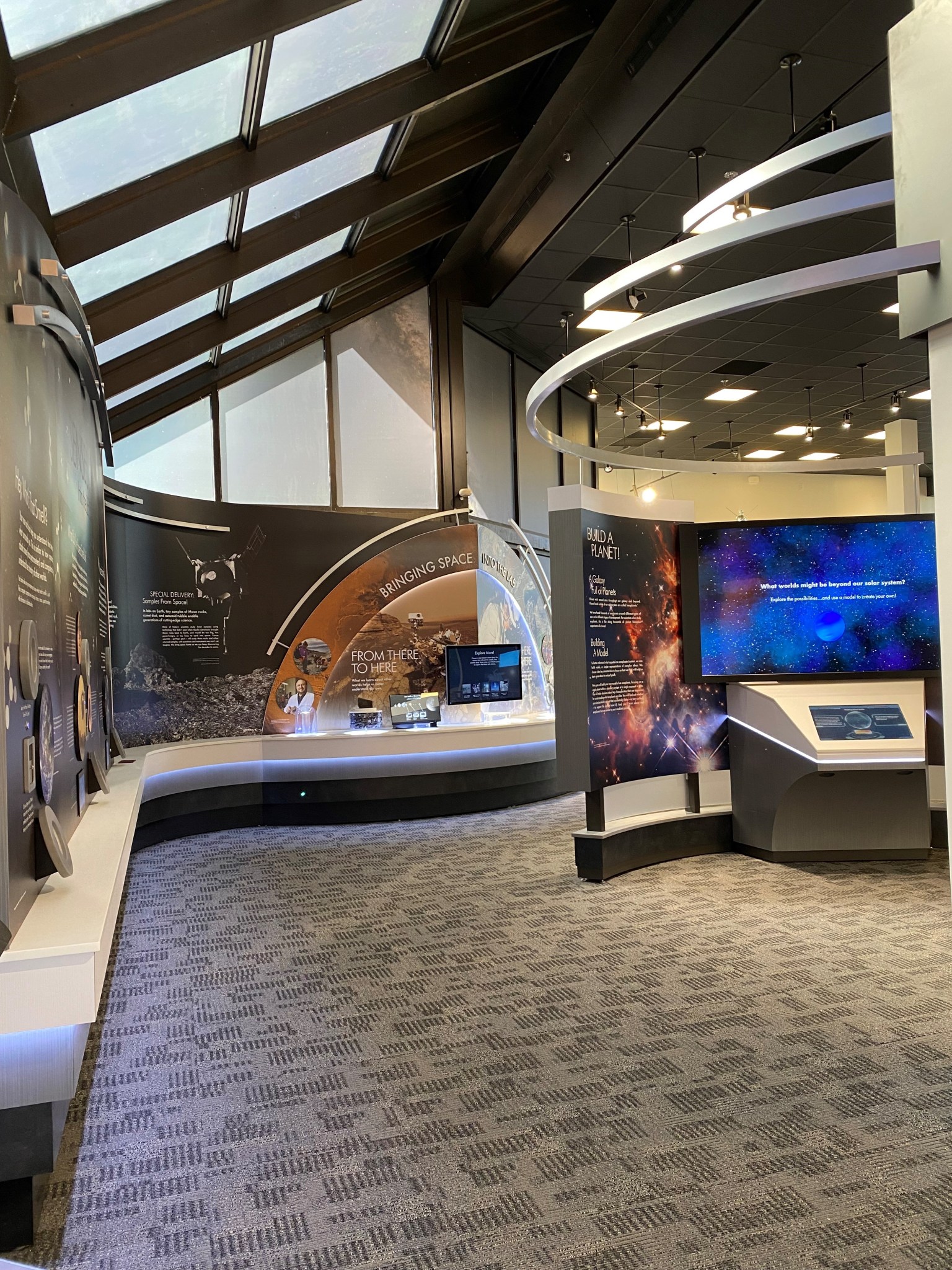
The image shows a portion of the new Beyond exhibit at NASA’s Goddard Space Flight Center. This exhibit shows that asking questions and working in teams are important to NASA’s exploration of the universe.
“Beyond,” the theme of Goddard’s planetary exhibit, is a metaphor for striving and exploring and pushing the boundaries of human knowledge. This exhibit shows that asking questions and working in teams are important to NASA’s exploration of the universe. Visitors can use all of their senses to explore the origins of all planets, the variety of bodies in the solar system, and the boundaries of life. Visitors can study rocks from space, use their sense of smell to identify solar system objects, and use computer modeling to build exoplanets (planets orbiting stars beyond our Sun).
Space Communications and Navigation
As humans venture farther into the solar system than ever before, how will they maintain contact with Mission Control and even loved ones here on Earth?
At the Space Communications exhibit, find a hidden message to learn about the different kinds of energy that connect astronauts with Earth. Choose messages to send to NASA spacecraft, and see what happens when they are blocked by clouds and interference. Finally, play games for all ages and expand your learning with an engaging, interactive touchscreen.
GLOBE Hall
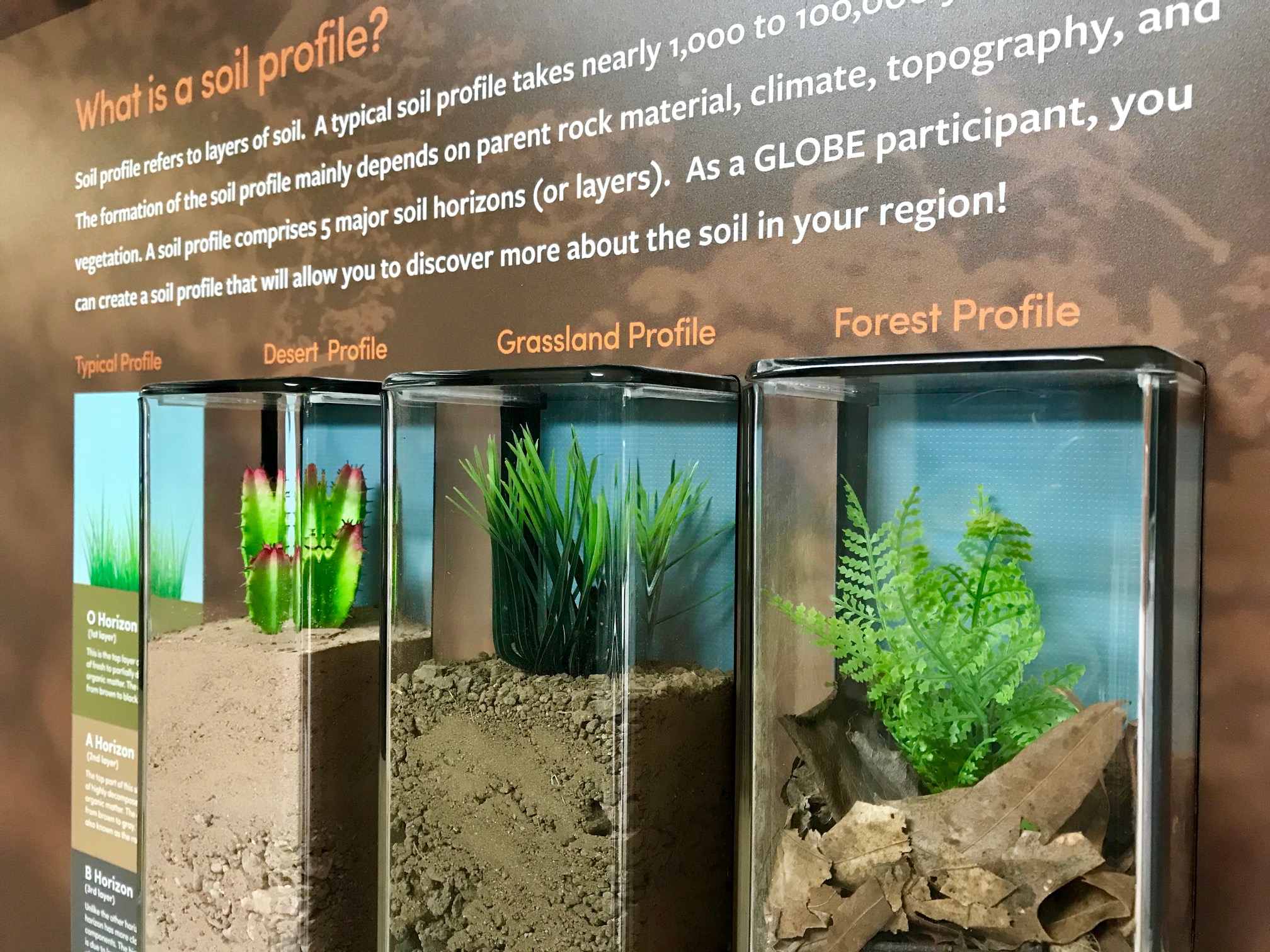
This four-station exhibit encourages visitors to participate in NASA Earth science through the GLOBE Program. The first station offers an overview of GLOBE and describes how anyone may become involved as a citizen scientist. Each of the remaining stations focus on different Earth “spheres,” and includes a description of the science, information about what you can do as a citizen scientist and how that benefits NASA science.
Neighborhood Earth
Your backyard is a lot bigger than you may think. Discover how all of Earth is one connected neighborhood when you look at it from NASA’s viewpoint in space. Explore our home planet like a NASA scientist, with satellite technology providing clues about the life, air and water around us.
The James Webb Space Telescope
The James Webb Space Telescope will be a giant step forward in the quest to understand our place in space. Launched in December of 2021, Webb was built right here at Goddard. Learn more about this exciting mission through an interactive 3-D tour and see what you look like in infrared light.
Webb will find the first galaxies that formed in the early universe, connecting the big bang to our own Milky Way galaxy. It will peer through dusty clouds to see forming planetary systems, connecting the Milky Way to our own solar system.
Learn More about the James Webb Space Telescope
Solarium
Experience the sun as never before. Featuring the same footage that NASA scientists use to study the sun, Solarium is an immersive, large-scale digital art installation that is a perfect marriage of art and technology. Through careful editing and data processing, Solarium transports viewers over glowing loops and stunning explosions of plasma on the sun’s surface. Viewed this way, the sun becomes simultaneously awe-inspiring and soothing – offering a brief departure from our modern, frenetic lifestyles.
Hubble Space Telescope
Learn how the Hubble Space Telescope – in orbit since 1990 – studies planets, galaxies, stars and our universe.
Goddard Rocket Garden and Astrobiology Walk
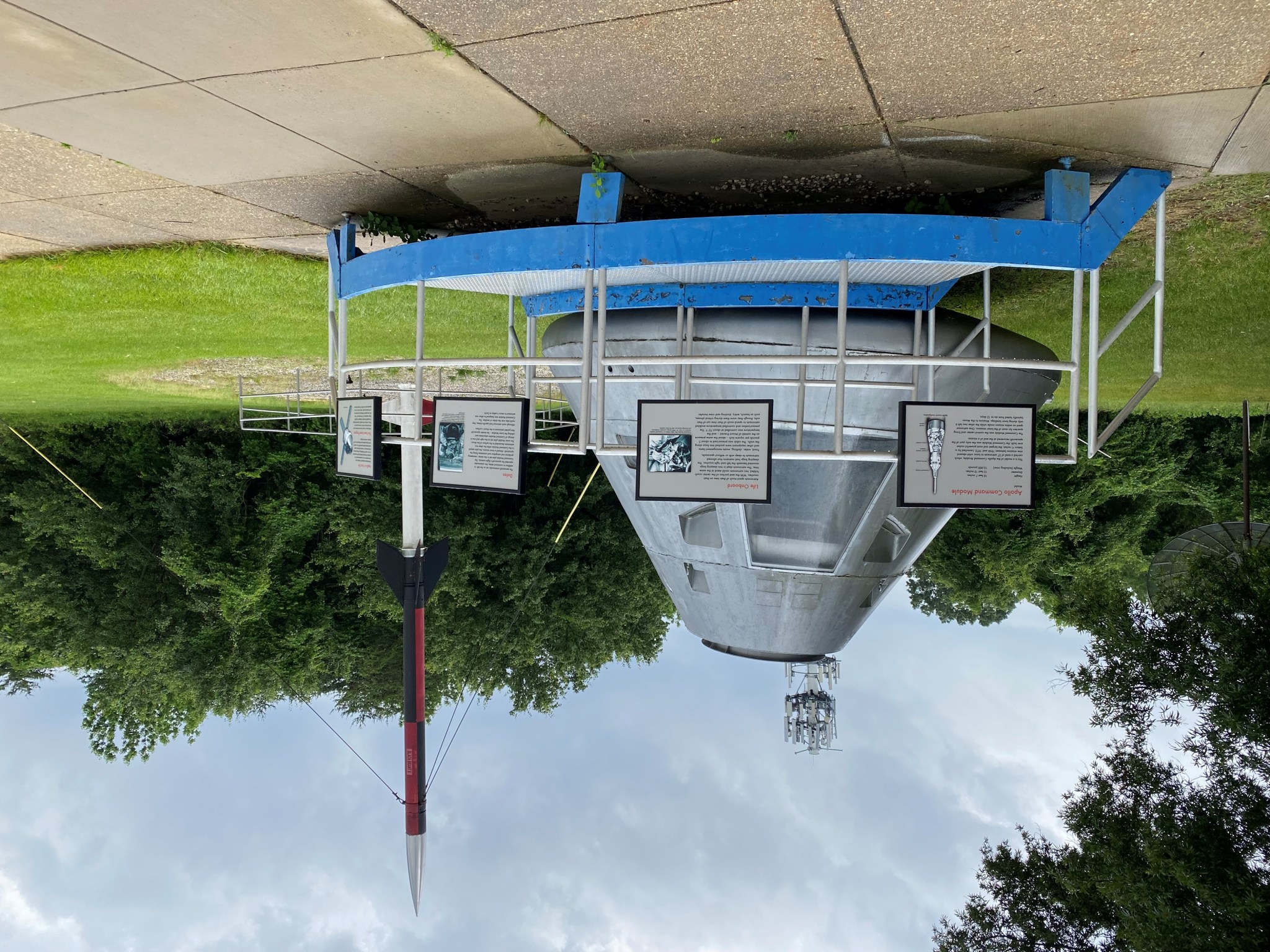
Visit this unique collection of space artifacts showcasing rockets from Goddard’s history. Then, explore the Astrobiology Walk, which explains Goddard’s role in probing the origins of life in our world, in our solar system and in the deep reaches of space.
Open year-round.
Learn More About the Rocket Collection
JPSS/GOES-R: Orbits Interweave
Located on the outer edge of the Rocket Garden, a new exhibit by the Joint Polar Satellite System (JPSS) program, together with the Geostationary Operational Environmental Satellite – R (GOES-R) Series program, features an abstract kinetic sculpture with three mirrored orbs representing the Sun, Earth and the satellites that are activated by the wind. JPSS and GOES-R are part of a collaboration between the National Oceanic and Atmospheric Administration and NASA. Learn about these missions’ roles in weather forecasting and how they help us in our everyday lives.
The Goddard Moon Tree
Located in the traffic circle in front of the Visitor Center, this sycamore tree flew as a seed aboard Apollo 14 as part of a joint project between NASA and the U.S. Forest Service.



























